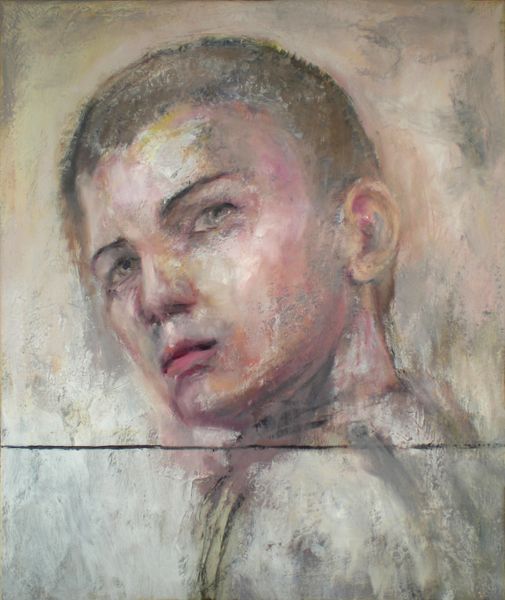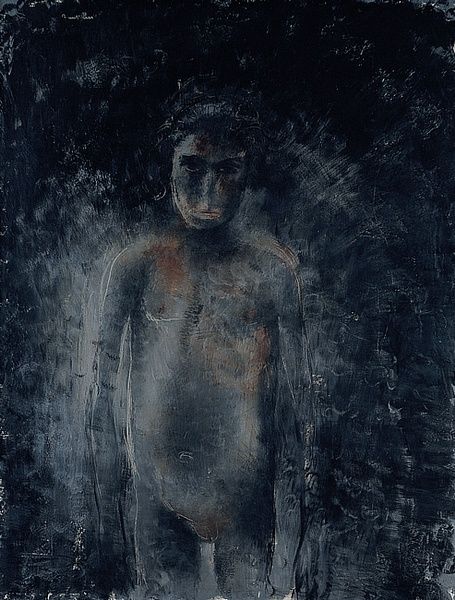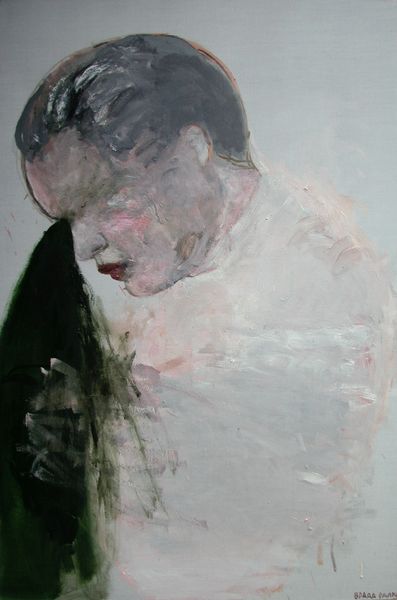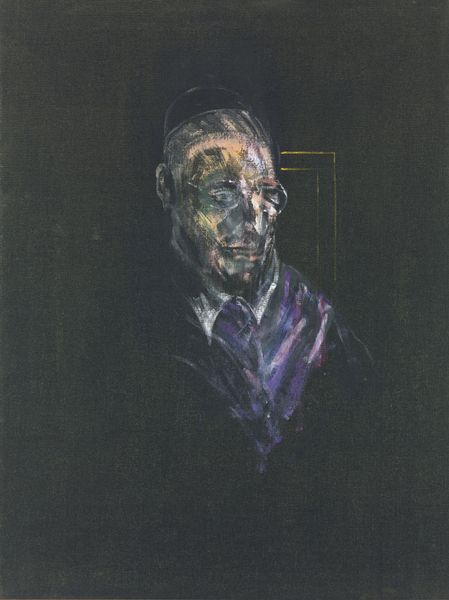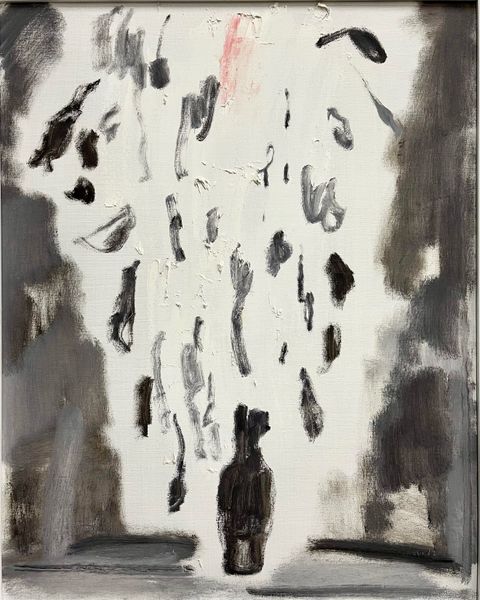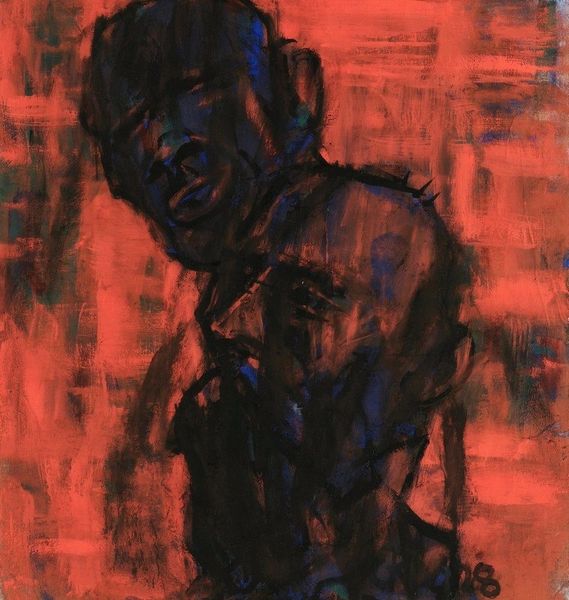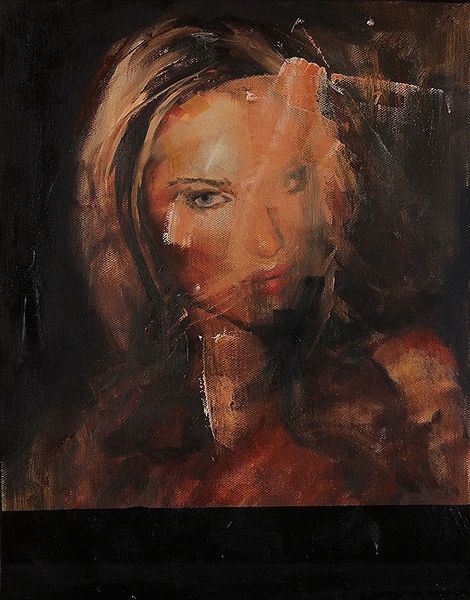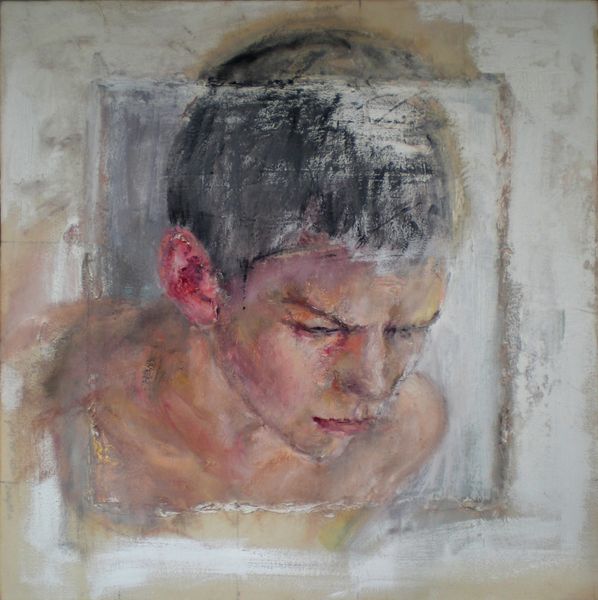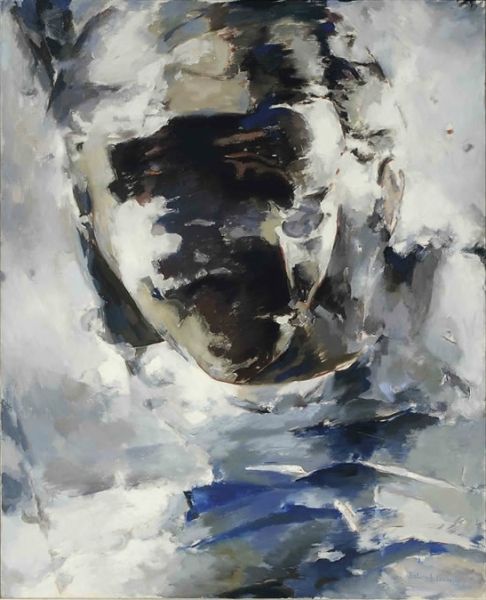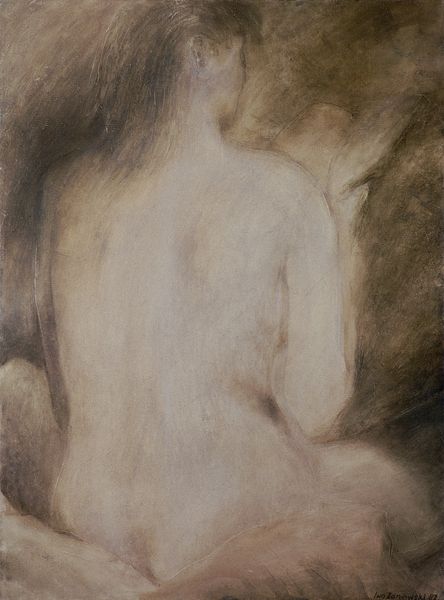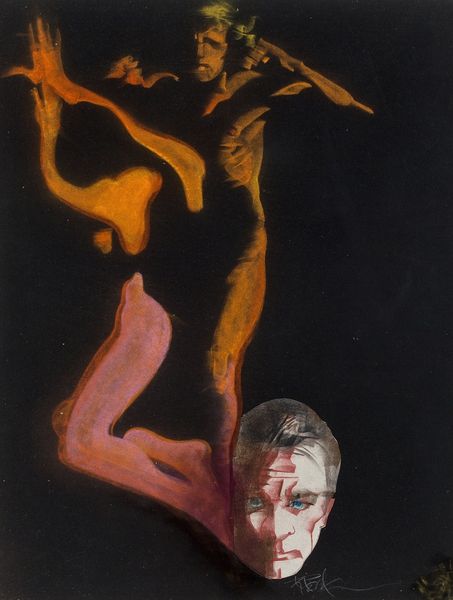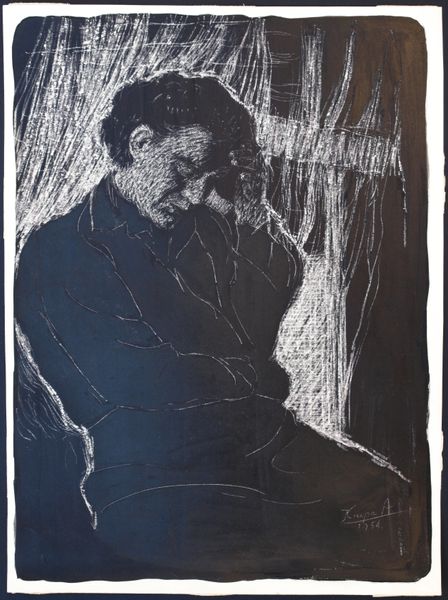
Copyright: Enrique Martínez Celaya,Fair Use
Curator: Immediately I feel a sense of haunting—a stillness before a storm perhaps? The limited palette enhances the introspective mood, making me think of something deeply personal, possibly even traumatic. Editor: Well, that's certainly a reading. Here we have Enrique Martínez Celaya’s 2011 work, "The Fourth Angel". Considering Celaya's trajectory, he moved from scientific pursuits to art; there is definitely a social critique embedded in this choice. Curator: A shift from science to art as social commentary! I’m intrigued. I notice that the figure is surrounded by these almost flame-like shapes and they do strike me as sparks—as though ideas or memories are being ignited, potentially tied to concepts like emotional awakening or resistance. What broader narrative might he be addressing? Editor: Celaya consistently questions the institutionalization of art and knowledge. By combining literary, philosophical, and scientific influences, his work addresses human experience more broadly. The figure—possibly an allusion to a fallen angel—challenges conventional beauty, while the surrounding luminescence creates a symbolic atmosphere. The social relevance of this is how our current systems devalue human intuition in favour of strict logic. Curator: I understand that connection. There is a real sense of struggle visualized here—as though the figure is weighed down by responsibility or perhaps battling inner demons amidst systemic problems. In a post-colonial world, is he commenting on inherited burdens or trauma through the depiction of this single figure? Editor: Possibly, the artwork aligns with his interest in examining the construction of identity. Its darkness hints at both the burden of knowledge and the destructive nature of progress at any cost. He often connects environmental degradation and colonial history. What does it mean for the viewer to be confronted by this introspective and troubled figure in our contemporary climate emergency? Curator: That is it. This piece demands introspection on the viewers' parts, in engaging with complex and relevant dialogues about social responsibilities and reform. It makes you examine yourself. Editor: Ultimately, I would say the somber tones and thoughtful symbolism certainly compel us to consider our place within these power structures.
Comments
No comments
Be the first to comment and join the conversation on the ultimate creative platform.
